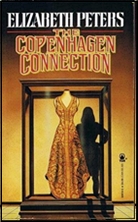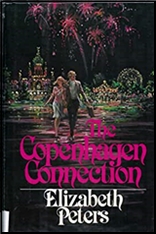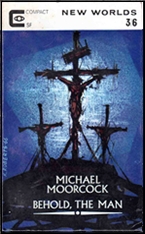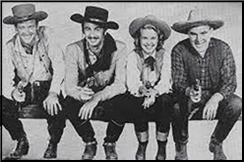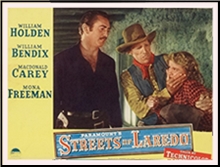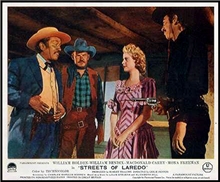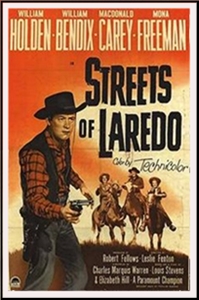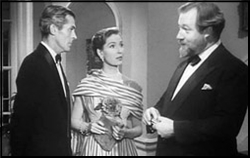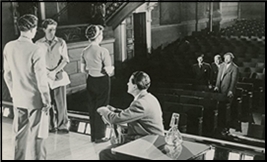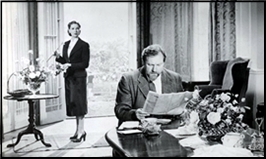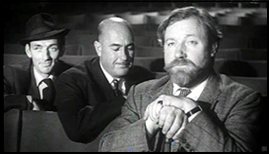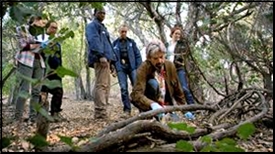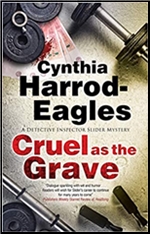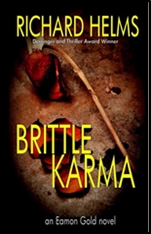REVIEWED BY DOUG GREENE:
NIGEL MORLAND – Mrs. Pym of Scotland Yard. Mrs. Palmyra Pym #13. Vallancey, UK, hardcover, 1946. No US edition.
In his anthology The Female of the Species, Ellery Queen disapprovingly quotes some unnamed “students of the genre” to the effect that “Edgar Wallace never wrote a first-rate story.” Whatever the case about Wallace, I think that the criticism is valid for Wallace’s friend and follower Nigel Morland. I have yet to read a memorable story by Morland, but he did maintain a high level of competence — despite having written one novel that received attention in Bill Pronzini’s Gun in Cheek.
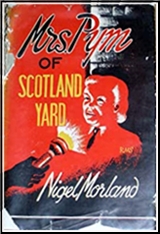
Mrs. Pym of Scotland Yard contains nine short stories in very small type — Vallencey press seems to have continued the “raid” pamphlets in cloth, and with the post-war paper shortage Vallencey crammed as many words as possible onto each page.
The first two stories, though not first rate, are quite clever. In “The Perfect Valet,” Mrs. Palmyra Pym (Scotland Yard’s only woman Inspector) uses her knowledge of bath-salts and syphons to solve a case of drowning. “The Rotherhithe Miracle” explains how there can be constant sounds of commotion in a room occupied only by a paralyzed woman. The other tales are less original.
What is most interesting about Mrs. Pym of Scotland Yard is Morland’s contribution to the concept of a female detective. In the 19th and early 20th centuries, the idea that a woman would actually lower herself to become a professional sleuth was almost unthinkable.
Many authors, therefore, said that their female detectives had been forced into that occupation by family reverses or by unfair accusations against a husband; certainly they wouldn’t have detected if they had any other choice. In this pattern, we have among others Mrs. Paschal (1864), Lady Molly (1910), and Constance Dunlap (1916).
The main exception is Fergus Hume’s Hagar Stanley, the gypsy detective (1898). The authors emphasize the femininity of their detectives, as the cases are solved by intuition or, as in F. Tennyson Jesse’s Solange Stories (1931), by an innate feeling for the presence of evil. (Not even Jesse’s writing ability masks the silliness of that concept.)
Much more convincing and perhaps the best woman detective of all time is Agatha Christie’s Miss Marple (1930). All of these sleuths are distinguished by, as Mrs, Paschal’s anonymous chronicler put it, their “ladylike conduct.” Mrs. Pym represents the other extreme from these feminine ferrets, intuitive investigators, and ladylike Lecoqs.
When Nigel Morland, with Edgar Wallace’s assistance, invented Pym around 1930, the detective was first a “he,” one “Ignatius Pym.” “Ignatius” became “Palmyra,” but his/her masculine characteristics still predominated. Although Morland mentions her “dormant maternal instincts” and “feminine illogicality,” it is difficult to find any stereotypical womanly characteristics in her actions.
She is “as hard as nails” and “her tongue’s rough on both sides.” She uses such phrases as ”Let’s grill Ma Forrest; she looks like a talker,” and when she is disgusted she “snorts malevolently.” She obtains a confession by threats of torture, and she allows an innocent suspect to be executed because she is certain that he is guilty of unpunished crimes. It is difficult to know why Torquemada in The Observer described her as “that perfection of a woman.”
In his article about Mrs. Pym in Murderess Ink, Morland describes “her often ruthless ways” as “a curious sign-post to a slowly emerging woman’s lib.” Certainly Mrs. Pym needs no assertiveness training.
Mrs, Pym is indeed an important development toward the modern female sleuth, but her aping of men seems to me less a signpost than a detour. The current direction is toward capable women who have not given up all womanliness, by whatever definition.In the traditional detective story we have finally gotten the proper balance in P.D. James’ Cordelia Gray, and in the private-eye story a similar balance is maintained in Sara Paretsky’s V. I. Warshawski. Neither of these sleuths would be cowed by Mrs. Pym.
– Reprinted from The Poison Pen, Volume 6, Number 1 (Spring 1984). Permission granted by Doug Greene.
Contents (alphabetically) —
The Curious Death
The Golden West
The Hungry Duchess
The Missing Forger
The Obvious Flaw
The Perfect Valet
The Rotherhithe Miracle
The Sorrowful Duke
The Stolen Heart
